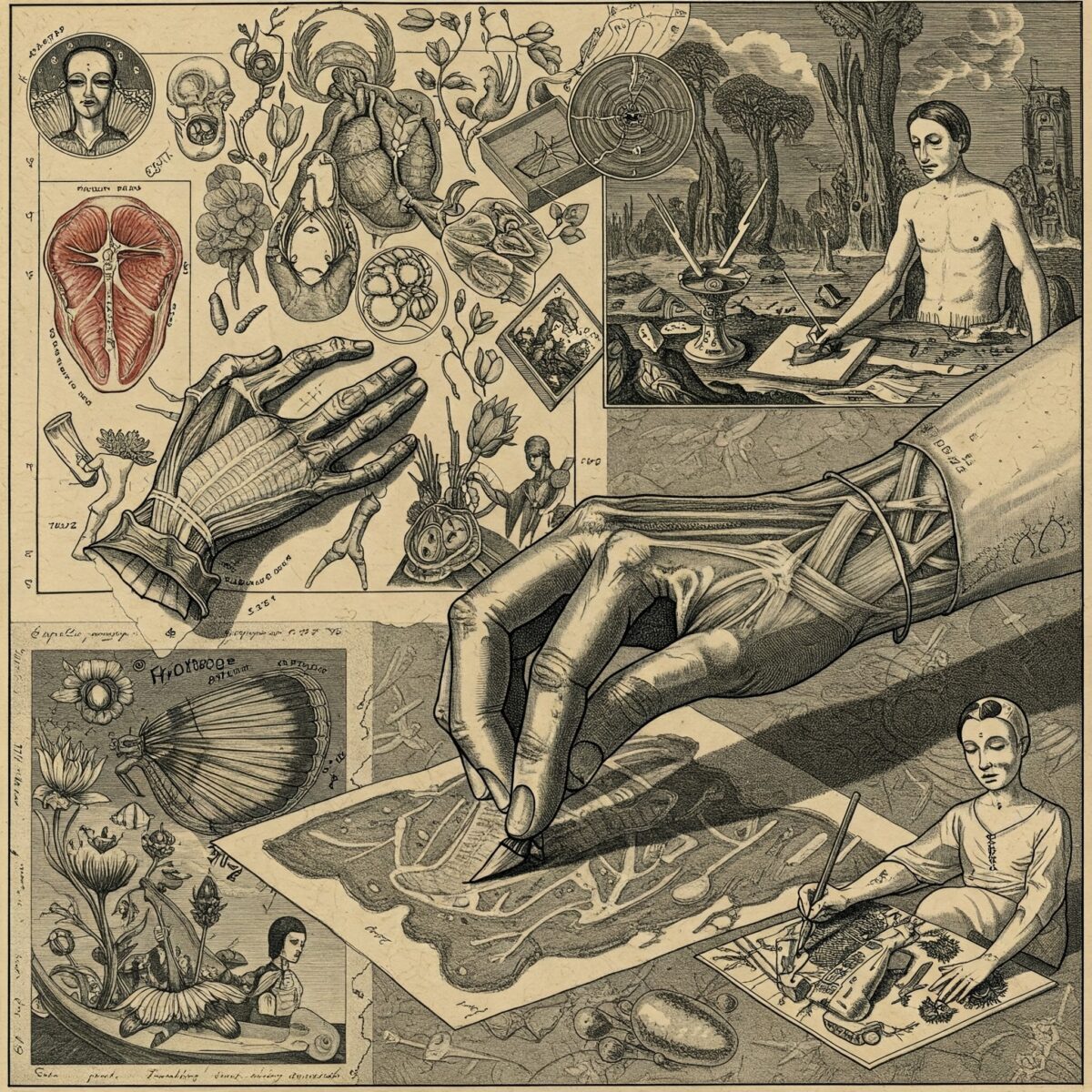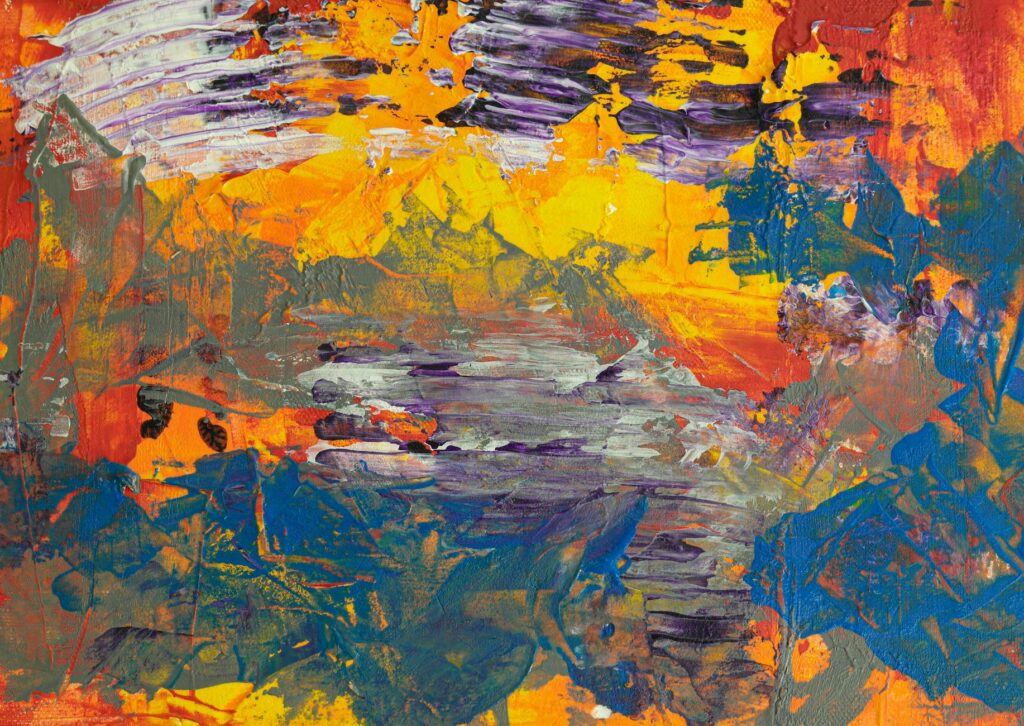Surrealism is one of the most fascinating and strange art movements in history. Born in the 1920s, it takes us into a dreamlike world where the impossible becomes possible. Unlike other art styles focused on depicting reality, Surrealism dives into our dreams, fears, and unconscious thoughts. Artists like Salvador Dalí painted melting clocks draped over branches, while René Magritte created men in bowler hats with apples floating in front of their faces. Surrealism isn’t just about creating weird images—it’s about exploring our inner worlds and challenging how we see reality.
Key Points:
- Surrealism began in the 1920s in Paris after World War I
- It focuses on dreams, the unconscious mind, and irrational imagery
- Founded by writer André Breton with the Surrealist Manifesto in 1924
- Famous surrealist artists include Salvador Dalí, René Magritte, and Frida Kahlo
- Uses techniques like juxtaposition, automatic drawing, and dreamlike imagery
- Influenced by Sigmund Freud’s theories about the unconscious mind
- Continues to influence modern art, advertising, film, and photography today
What is Surrealism and How Did It Begin?
Surrealism emerged from the chaos and disillusionment following World War I. In 1924, a French writer named André Breton published the “Surrealist Manifesto,” officially launching the movement. Breton defined Surrealism as “pure psychic automatism” – a fancy way of saying it’s about expressing thoughts without the control of reason or concern for what makes sense.
The early Surrealists were heavily influenced by Sigmund Freud’s theories about dreams and the unconscious mind. They believed that by tapping into the unconscious, they could access a “super-reality” (or “sur-reality” in French) that was more truthful than everyday life.
“Surrealism is based on the belief in the superior reality of certain forms of previously neglected associations, in the omnipotence of dream, in the disinterested play of thought.”
André Breton
The movement first began with writers and poets experimenting with automatic writing—putting pen to paper and writing whatever came to mind without planning or editing. Soon, visual artists joined in, applying similar techniques to painting, sculpture, photography, and film.
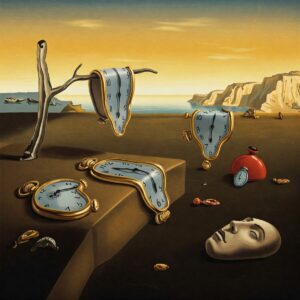
Key Characteristics of Surrealist Art
Surrealism has several distinctive features that make it immediately recognizable:
Unexpected Juxtaposition
Surrealists love placing unrelated objects together to create jarring, strange, or thought-provoking images. Think of Magritte’s painting of a giant rock floating above the sea or Dalí’s elephant with impossibly long, spindly legs.
Dream Imagery
Many Surrealist works look like dreams frozen in time. They contain impossible scenarios, strange transformations, and distortions of reality that feel both familiar and alien at the same time.
Psychological Symbolism
Surrealists filled their work with symbols representing deeper psychological meanings. These symbols could be personal to the artist or draw from universal archetypes and mythology.
Transformation and Metamorphosis
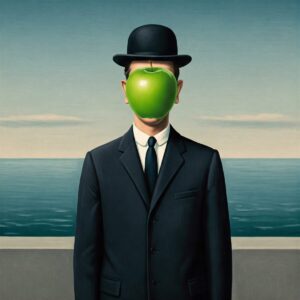
Objects and figures changing into something else is a common Surrealist theme. Human bodies might blend with mechanical parts, animals might have human features, or ordinary objects might melt or morph into something new.
Biomorphic Forms
Many Surrealists used organic, curved shapes that resemble living organisms but don’t represent any specific creature—a style called “biomorphic.”
Surrealist Techniques and Methods
Surrealist artists developed several innovative techniques to bypass logical thinking and tap into the unconscious:
Automatic Drawing
Similar to automatic writing, this technique involves drawing without conscious control, letting the hand move freely across the paper. Artists like André Masson would often start with random lines and develop them into dreamlike scenes.
Frottage
Max Ernst pioneered this technique of placing paper over a textured surface (like wood grain or leaves) and rubbing with pencil to create unexpected patterns and textures that could inspire further imagery.
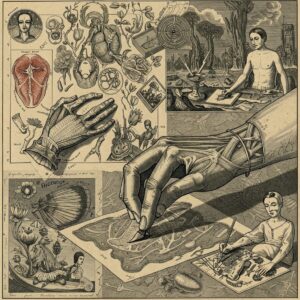
Decalcomania
This process involves pressing paint between two surfaces and then pulling them apart to create random, unpredictable patterns that can evoke landscapes, creatures, or abstract forms.
Collage
Surrealists would cut images from magazines, books, and photographs, then combine them in strange and unexpected ways to create new realities.
Paranoiac-Critical Method
Developed by Salvador Dalí, this technique involves staring at an object until it transforms in the mind’s eye, revealing hidden images and associations.
Famous Surrealist Artists and Their Works
Salvador Dalí (1904-1989)
The Spanish artist with the famous mustache is perhaps the most recognizable Surrealist. His precisely painted dreamscapes feature melting watches, burning giraffes, and eggs—all symbols from his personal dream world. His most famous work, [“The Persistence of Memory”], has become an icon of Surrealism.

René Magritte (1898-1967)
The Belgian artist created eerily realistic images of impossible situations. His work often plays with reality, identity, and the relationship between words and images. Magritte’s surrealist works like “The Treachery of Images” (the famous pipe with the words “This is not a pipe”) challenge how we understand representation.
Frida Kahlo (1907-1954)
While she never officially joined the Surrealist movement, Kahlo’s deeply personal, symbolic, and sometimes disturbing self-portraits explore pain, identity, and Mexican culture through dreamlike imagery.
Joan Miró (1893-1983)
The Spanish artist developed a unique style featuring colorful, playful shapes and symbols floating in undefined spaces. His work feels like a child’s drawing mixed with sophisticated artistic vision. Learn more about Miró’s surrealist vision.
Max Ernst (1891-1976)
A German pioneer of both Dada and Surrealism, Ernst experimented with numerous techniques including collage, frottage, and grattage (scraping paint across canvas). His mysterious forests, bird-men, and landscape-like forms bridge the gap between representation and abstraction.
How Surrealism Relates to Other Art Movements
Surrealism didn’t emerge from nowhere—it has important connections to other artistic movements:
Dada and Surrealism
Surrealism grew directly out of Dadaism, an earlier movement that used nonsense, chaos, and anti-art concepts to protest the horrors of World War I. While Dada was primarily destructive and anarchic, Surrealism took a more constructive approach, using similar techniques but with the goal of psychological exploration.
Surrealism and Cubism
Cubism broke apart visual reality into geometric forms and multiple perspectives. Surrealism took this freedom from strict visual representation even further, allowing artists to completely reimagine reality according to psychological rather than visual logic.
Influence on Abstract Expressionism
Later movements like Abstract Expressionism borrowed Surrealism’s interest in the unconscious and automatic techniques, though they often abandoned recognizable imagery entirely.
The Lasting Impact of Surrealism
Though the formal Surrealist movement declined after World War II, its influence remains strong in various fields:
In Contemporary Art
Many artists today continue to use Surrealist techniques and themes, creating dreamlike imagery that explores psychological states and challenges reality.
In Popular Culture
Elements of Surrealism appear constantly in movies, music videos, advertising, and fashion. The strange juxtapositions and dreamlike imagery pioneered by Surrealists have become part of our visual vocabulary.
In Psychology and Therapy
Art therapy often uses Surrealist-inspired techniques to help people express unconscious feelings and thoughts that might be difficult to put into words.
The Evolution of Surrealism
Dada Roots
Surrealism’s predecessor, the Dada movement, emerges in Zurich as an anti-war, anti-art protest. Artists like Marcel Duchamp, Man Ray, and Tristan Tzara experiment with chance, absurdity, and the irrational.
Surrealist Manifesto
André Breton publishes the “First Surrealist Manifesto,” officially launching the movement. He defines Surrealism as “pure psychic automatism” aimed at expressing thought without rational control.
Visual Surrealism Emerges
The movement expands from literature to visual arts. Artists like Joan Miró, Max Ernst, and René Magritte begin developing distinctive Surrealist painting styles and techniques.
Golden Age
Salvador Dalí joins the movement and develops his “paranoiac-critical method.” Surrealism reaches its height with iconic works like “The Persistence of Memory” (1931). Frida Kahlo creates deeply personal surrealist imagery.
Global Expansion
World War II forces many Surrealists to flee Europe for the Americas. The movement spreads internationally, influencing artists worldwide and establishing roots in Mexico, the United States, and Japan.
Transformation
Surrealism influences new movements like Abstract Expressionism and Pop Art. While the formal movement declines, its ideas about the unconscious and juxtaposition spread into mainstream culture.
End of an Era
André Breton dies in Paris. While often considered the “end” of the official Surrealist movement, artists continue working in Surrealist traditions.
Lasting Legacy
Surrealism’s influence extends into contemporary art, film, advertising, digital media, and AI art, continuing to shape our visual culture with dream-like imagery and unexpected juxtapositions.
How to Identify Surrealist Art
When looking at artwork, these clues can help you identify Surrealist pieces:
- Impossible scenarios that could only happen in dreams
- Familiar objects in unfamiliar contexts or combinations
- Distorted perspectives and proportions
- Highly detailed, realistic rendering of impossible scenes
- Dream symbols like clocks, eyes, keys, or doors
- Transformation of one thing into another
- Unexpected combinations of disparate elements
Exploring Surrealism Today
You don't need to visit major museums to experience Surrealism (though that's certainly worthwhile!). Here are some ways to explore this fascinating movement:
- Look for Surrealist influences in movies by directors like Tim Burton, Guillermo del Toro, or David Lynch
- Try creating your own Surrealist art using techniques like collage or automatic drawing
- Notice Surrealist elements in advertising, music videos, and fashion photography
- Read Surrealist poetry or try writing some yourself using automatic writing
- Follow contemporary artists who work with Surrealist themes on social media
- Explore digital art and AI-generated imagery, which often produces Surrealist-like results
Understanding what Surrealism is helps us appreciate how art can be more than just pretty pictures—it can be a window into our deepest thoughts, fears, and dreams. By challenging what's "real," Surrealist artists invite us to question our assumptions and see the world with fresh eyes. The strange, dreamlike qualities of Surrealism continue to captivate viewers almost a century after the movement began, proving that sometimes the most meaningful art comes from exploring the irrational sides of our minds.
Discover More in our What is .... Series
What is Impressionism? A Beginner’s Guide to the Art Movement
What is Watercolor Painting? Your First Steps
What is Cubism? A Beginner’s Guide
FAQ: What is Surrealism?
What are the main characteristics of Surrealism?
Surrealism is characterized by dreamlike imagery, unexpected juxtapositions, symbolic elements, distortion of reality, psychological themes, and techniques designed to bypass conscious control. Surrealist art often features detailed, realistic rendering of impossible or irrational scenes that explore the unconscious mind.
When did Surrealism begin?
Surrealism officially began in 1924 when André Breton published the "Surrealist Manifesto" in Paris. However, the ideas that would become Surrealism were developing in the years following World War I, evolving from the earlier Dada movement and influenced by Freudian psychoanalysis.
Who started the Surrealism movement?
André Breton, a French poet and writer, is considered the founder of Surrealism. He wrote the first Surrealist Manifesto and served as the movement's primary theorist and organizer, bringing together artists and writers who shared his vision of accessing deeper reality through the unconscious mind.
What influenced Surrealism art?
Surrealism was primarily influenced by Sigmund Freud's theories of the unconscious, dreams, and free association; the earlier Dada movement's rejection of rationality; the trauma and disillusionment following World War I; non-Western art forms; and developments in psychology and philosophy regarding perception and reality.
Is Surrealism still relevant today?
Yes, Surrealism remains highly relevant today. Its techniques and visual language have influenced contemporary art, advertising, film, fashion, and digital media. The movement's exploration of dreams, psychology, and the irrational continues to resonate in our complex, often bewildering modern world, where questioning reality and exploring the unconscious remain powerful artistic approaches.

